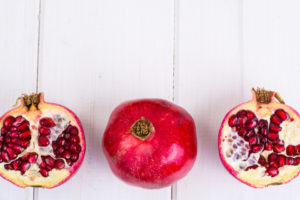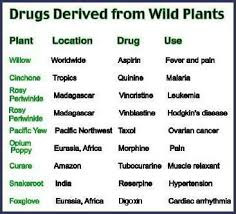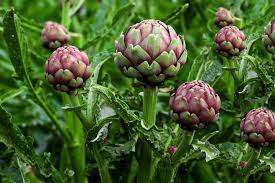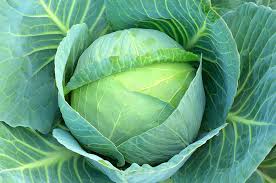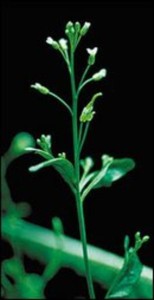
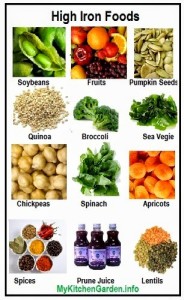
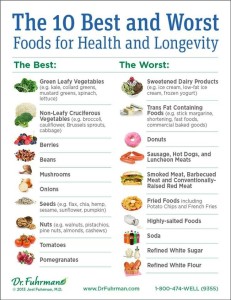
Foods from roots/plants:
Arabidopsis Plant
Look at medical proof, in July 2011 by online publication of Nature, investigated why Arabidopsis does its major stem-growing in the dark—a pattern common to most plants. Biologist Steve Kay and colleagues at the University of California, San Diego, report that a specific trio of proteins regulates the rhythm in Arabidopsis stems. Arabidopsis thaliana helped scientists not very long ago too unearth new clues about the daily cycles of many organisms, including humans. This is the latest in a long line of research, much of it supported by the National Institutes of Health, that uses plants to solve puzzles in human health. While other model organisms may seem to have more in common with us, greens like Arabidopsis provide an important view into genetics, cell division and especially light sensing, which drives 24-hour behavioral cycles called circadian rhythms.
Some human cells, including cancer cells, divide with a 24-hour rhythm. One of the main human circadian rhythm genes, cryptochrome, has been associated with diabetes and depression. Both of these discoveries grew from work with plants.
T group of proteins, called the evening complex, interacts in the early evening to silence two genes that usually promote plant growth. When the evening complex’s activity trails off a few hours before dawn, proteins release the brakes on growth and plants enter their nightly phase of rapid stem elongation.
When the plant is mutated the three genes that code for the evening complex, this makes the Arabidopsis biological clock run out of sync—stems grew unusually long and flowered early.
Scientists aren’t yet certain why night is the best time for stems to grow, but Kay speculates it has to do with using resources efficiently. Plants pick up carbon and nitrogen during the day, then store these essential nutrients as starch and proteins. “In the later night, they can release these resources in a coordinated fashion to provide the building blocks for stem growth,” says Kay. “
Our understanding of human health and the role of clocks in health and disease can greatly benefit from studying how clocks work in plants,” he adds.
Scientists are interested in answering basic biological questions, but others who work with plants have their eyes on future disease therapies. Plant-based molecules, for instance, are being used to target reservoirs of HIV that hide out in their hosts. At the University of California, Berkeley, chemist Jay Keasling has look over the years for simple ways to get microbes to produce greater quantities of these plant-based molecules at lower cost.
How plants like Arabidopsis suppress harmful genes may also help improve HIV therapies. A team of biologists led by Craig Pikaard at Washington University in St. Louis is investigating RNA polymerases, chemicals important in determining which genes get switched on, to learn how plants silence harmful virus-derived genes. Similar silencing pathways could be harnessed for HIV therapies.
More generally, scientists are looking toward plants as a medicinal source. Chemist Sarah O’Connor at MIT is genetically engineering periwinkle plants, the natural source of the anticancer drug vinblastine, to produce variations of the drug with halogens attached. Halogens make some medicines last longer in the body, meaning that probing periwinkle’s capabilities could make cancer treatments more effective.
Plant compounds present in carrots and parsley may one day support more effective delivery of chemotherapy treatments, new research has found. Specific plant compounds are able to inhibit transport mechanisms in the body that select what compounds are absorbed into the body, and eventually into cells. These same transport mechanisms are known to interfere with cancer chemotherapy treatment.
Some further examples of good compounds coming from plants for human lives are:
Flavonoids are one class of secondary plant metabolites that are also known as Vitamin P or citrin. These metabolites are mostly used in plants to produce yellow and other pigments which play a big role in coloring the plants. In addition, Flavonoids are readily ingested by humans and they seem to display important anti-inflammatory, anti-allergic and anti-cancer activities. Flavonoids are also found to be powerful anti-oxidants and researchers are looking into their ability to prevent cancer and cardiovascular diseases. Flavonoids help prevent cancer by inducing certain mechanisms that may help to kill cancer cells, and researches believe that when the body processes extra flavonoid compounds, it triggers specific enzymes that fight carcinogens. Good dietary sources of Flavonoids are all citrus fruits, which contain the specific flavanoids hesperidins, quercitrin, rutin, berries, tea, dark chocolate and red wine that includes many of the health benefits attributed to these foods come from the Flavonoids they contain.
Phytic acid is the main method of phosphorus storage in plant seeds, but is not readily absorbed by many animals (only absorbed by ruminant animals). Not only is phytic acid a phosphorus storage unit, but it also is a source of energy and cations, a natural antioxidant for plants, and can be a source of mycoinositol which is one of the preliminary pieces for cell walls.
Phytic acid is also known to bond with many different minerals, and by doing so prevents those minerals from being absorbed; making phytic acid an anti-nutrient. There is a lot of concern with phytic acids in nuts and seeds because of its anti-nutrient characteristics. In preparing foods with high phytic acid concentrations, it is recommended they be soaked in after being ground to increase the surface area. Soaking allows the seed to undergo germination which increases the availability of vitamins and nutrient, while reducing phytic acid and protease inhibitors ultimately increasing the nutritional value. Cooking can also reduce the amount of phytic acid in food but soaking is much more effective.
Phytic acid is an antioxidant found in plant cells that most likely serves the purpose of preservation. This preservation is removed when soaked, reducing the phytic acid and allowing the germination and growth of the seed.
Atropine is a type of secondary metabolite called a tropane alkaloid. Alkaloids contain nitrogens, frequently in a ring structure, and are derived from amino acids. Tropane is an organic compound containing nitrogen and it is from tropane that atropine is derived. Atropine is synthesized by a reaction between tropine and tropate, catalyzed by atropinase. Within Atropa belladonna atropine synthesis has been found to take place primarily in the root of the plant. The concentration of synthetic sites within the plant is indicative of the nature of secondary metabolites.
Gossypol has a yellow pigment and is found in cotton plants. It occurs mainly in the root and/or seeds of different species of cotton plants. Gossypol can have various chemical structures. It can exist in three forms: gossypol, gossypol acetic acid, and gossypol formic acid. All of these forms have very similar biological properties. Gossypol is a type of aldehyde, meaning that it has a formyl group. The formation of gossypol occurs through an isoprenoid pathway. Isoprenoid pathways are common among secondary metabolites. 3Gossypol’s main function in the cotton plant is to act as an enzyme inhibitor. An example of gossypol’s enzyme inhibition is its ability to inhibit nicotinamide adenine dinucleotide-linked enzymes of Trypanosoma cruzi. Trypanosoma cruzi is a parasite which causes Chaga’s disease.
For some time it was believed that gossypol was merely a waste product produced during the processing of cottonseed products. Extensive studies have shown that gossypol has other functions. Many of the more popular studies on gossypol discuss how it can act as a male contraceptive. Gossypol has also been linked to causing hypokalemic paralysis. Hypokalemic paralysis is a disease characterized by muscle weakness or paralysis with a matching fall in potassium levels in the blood. Hypokalemic paralysis associated with gossypol in-take usually occurs in March, when vegetables are in short supply, and in September, when people are sweating a lot. This side effect of gossypol in-take is very rare however. Gossypol induced hypokalemic paralysis is easily treatable with potassium repletion.
Believe or not, plants enhanced our lives.
Tune in tomorrow of specific names of compounds in foods we eat to help your health derived from plants.




